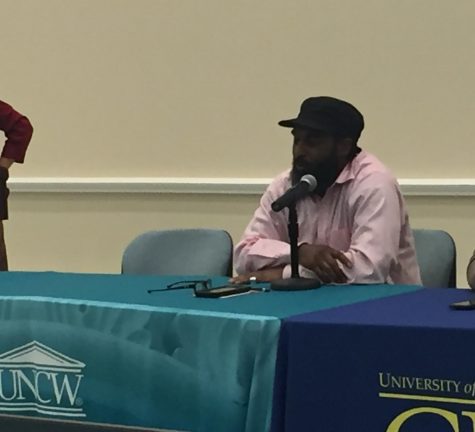Newly released with a record
How North Carolina’s affordable housing impacts African American ex-prisoners.
The issue of affordable housing trickles down to one of America’s most vulnerable populations: African American prisoners, said a Wilmington community outreach coordinator at UNC Wilmington’s McNeill Hall.
“When [African American prisoners] come back to the communities [after incarceration], and when they cannot work over here and they cannot live over here, then they return right back to their geographical location where they see all type of other series of social inequities and instabilities,” said Abdul Hafeedh bin Abdullah, the community outreach coordinator during the “Affordable Housing” panel.

“Affordable Housing: Taking the Pulse on Poverty” was a panel discussion at UNCW’s Seventh Annual Poverty Symposium. This discussion featured four panelists: Paul D’Angelo, Samuel Gunter, Suzanne E. Rogers and Abdullah. Each of them covered several topics dealing with the affordable housing problem in Wilmington. Abdullah’s topic covered the housing struggles African American prisoners face when they are released.
Abdullah is employed as a health educator at Blue Ribbon Commission on the Prevention of Youth Violence [BRC] in Wilmington, N.C. He focuses on what causes community instability and violence. Abdullah also has done work with the Centers for Disease Control and Prevention, and national public health clinics across the U.S., according to the UNCW “Affordable Housing” pamphlet.
“In the past three decades, we have seen an increase in individuals incarcerated in the United States of America … From 200,000 on average to 2.3 to 2.8 million; that is people in prisons. Our correctional facilities. When you expand beyond that, you have got anywhere from 7 to 8 million in extended forms of institutional societies,” said Abdullah.
In N.C. alone, 37,262 inmates were housed in the state’s 55 prison facilities in 2017. Out of those inmates, 52 percent of them were Black, according to the North Carolina Department of Public Safety website. Half of them were released.
When 50 percent of the African American prisoners have finished their sentences, many try readjusting to life outside the facilities by getting jobs and buying/renting affordable homes. However, these tasks were and are difficult for them to accomplish because of their criminal records, according to Abdullah.
“When it comes to equitable access to economics and employment, it is a no because [property owners and investors] have the legal right to say, ‘No, this person has a crime. I will not have to allow my property or my business to be at risk by hiring someone with a criminal background,’” said Abdullah. One of the audience members of the panel discussion agreed with his statement.
“When you have a felony on your record, you cannot stay in public housing. [This situation causes] folks that are couch surfing, staying in homes they should not be staying in and because, they have no other place to go,” said Jonathan Barfield Jr., who is the New Hanover County commissioner and has been a realtor for the past 20 years.
Even if or when ex-prisoners become eligible for affordable housing, they or anyone else who has never been incarcerated would still have years of lists to wait on for a place.
“As a young woman, I put myself on the list with a young child. And I think after a year I came back with my masters [in 1982], I got approved for housing … That is seven years [of waiting on the list], said Deborah Docks Maxwell, the president of the New Hanover NACCP. Maxwell was also a former social worker who had experience with others that had problems with getting affordable housing.
Many problems can arise for ex-prisoners when they are being rejected for a home. These problems are unemployment and being homeless for years. It also can lead them down a dangerous path with behaviors that could reflect violence, prostitution and drug addiction – a path that is not easy to overcome, according to Abdullah.
By having these behaviors, it could cause them to go back to prison and have that cycle repeat again and again.
Twenty-eight percent of N.C. prisoners were incarcerated in 2017, according to the NCDPS’s March 2018 Research Bulletin. Although this percentage is low, it does not make it any less of an issue.


![A map of emergency callboxes on campus. (UNCW) [hyperlink: https://uncw.maps.arcgis.com/apps/webappviewer/index.html?id=579a0e90030c4864a41c70fbe06338d9 ]](https://theseahawk.org/wp-content/uploads/2023/12/IMG_6388-600x277.png)








